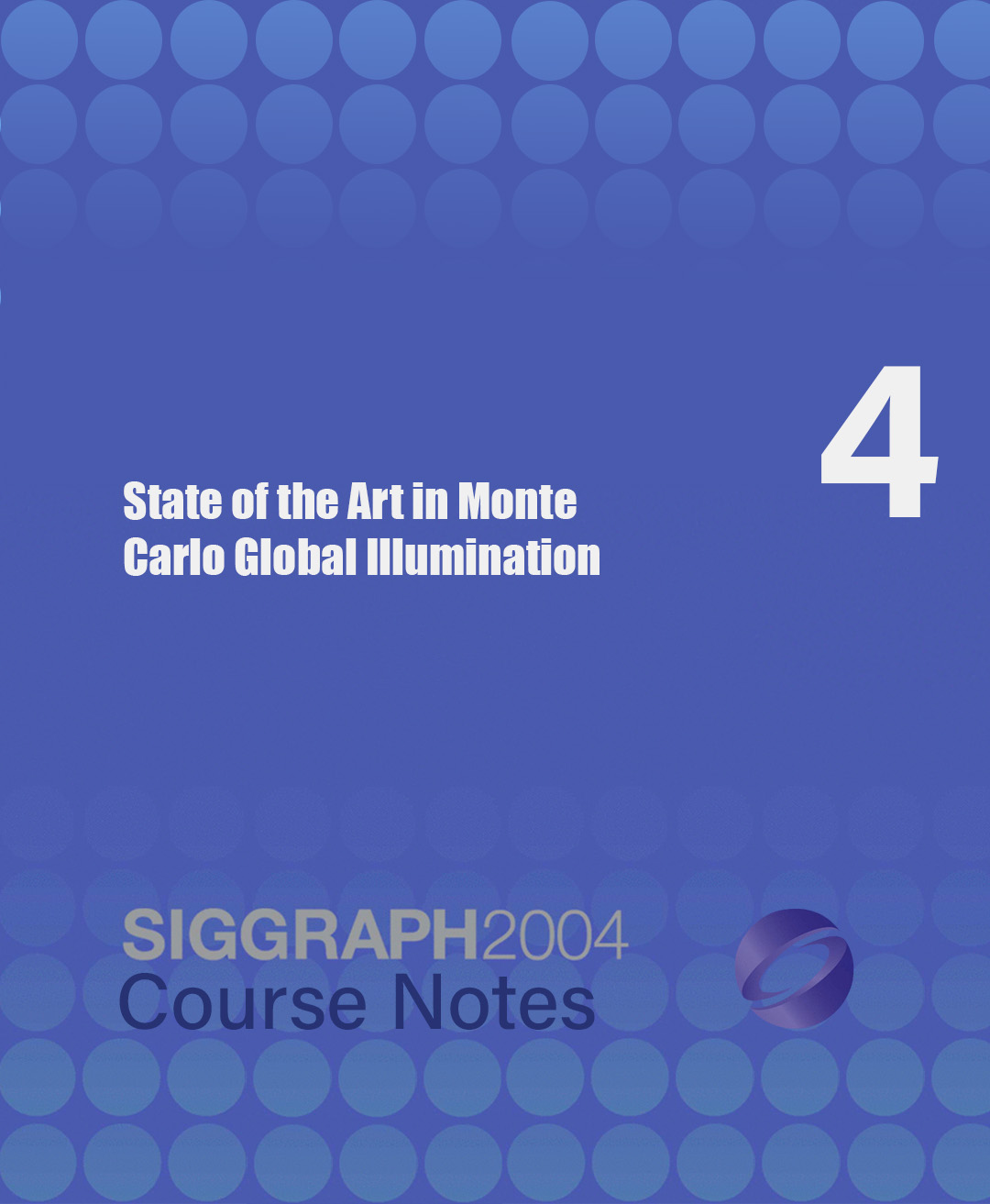“State of the Art in Monte Carlo Global Illumination” by Dutré, Jensen, Arvo, Bala, Bekaert, et al. …
Conference:
Type(s):
Entry Number: 04
Title:
- State of the Art in Monte Carlo Global Illumination
Course Organizer(s):
Presenter(s)/Author(s):
Abstract:
Prerequisites
A basic understanding of classic photo-realistic rendering algorithms, such as basic ray tracing and radiosity is assumed. Knowledge of probability theory is very helpful. Some familiarity with transport equations and radiometry is useful but not required.
Intended Audience
Students and professionals who are interested in photo-realistic rendering techniques and want to develop their own global-illumination algorithms.
Description
Realistic image synthesis is increasingly important in areas such as entertainment (movies, special effects, and games), design, architecture, and more. A common trend in all these areas is the quest for more realistic images of increasingly complex models. Monte Carlo global illumination algorithms are the only techniques that can handle this complexity. Recent advances in algorithms and computing power have made Monte Carlo algorithms very practical and a natural choice for most image-synthesis problems.
The purpose of this course is to provide a thorough understanding of the principles of Monte Carlo path-tracing methods and a detailed overview of the most recently developed methods. Part 1 covers the fundamentals of realistic image synthesis (radiometry, rendering equations). Part 2 focuses on the mathematical tools needed to compute integrals using Monte Carlo sampling. Parts 3 and 4 cover specific algorithms that have proven very useful in global illumination rendering.




